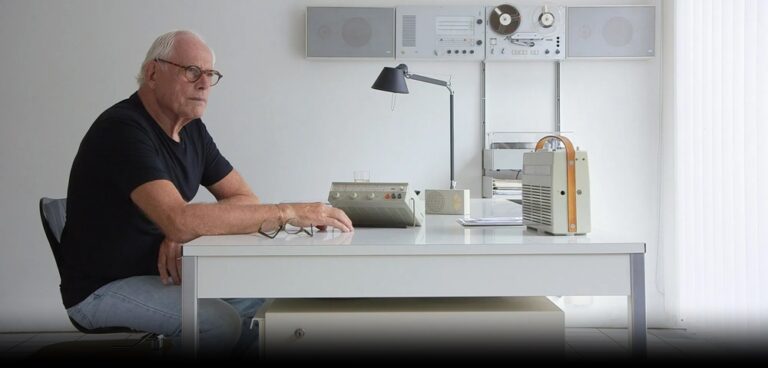Good design is a concept defined by industrial designer Dieter Rams’s principles, ensuring that a product is useful, understandable and innovative amongst other things, while at the same time, involving as little design as possible.
Ultimately, designers strive for good design, and as Dieter Rams has said, “You cannot understand good design if you do not understand people.”
Rams’s ten principles highlight that good design:
- Is innovative
- Makes a product useful
- Is aesthetic
- Makes a product understandable
- Is unobtrusive
- Is honest
- Is long-lasting
- Is thorough down to the last detail
- Is environmentally friendly
- Involves as little design as possible
Mads Soegaard, Founder of The Interaction Design Foundation, comments: “The term “good design” sounds deceptively self-evident. When designers are practising, it needs to be clear which design elements actually make good design, and don’t over-complicate the design.
“Design is a field where we understand, communicate with and enhance the world around us, particularly by improving people’s lives. Indeed, the cost of bad design is frustrating users and a damaged brand name.
In order to ensure that you provide good design, in line with Rams’ suggestions and principles, the following points are crucial:
-
Strive for innovation
Being innovative in design means moving alongside the developments in innovative technology. So, try to keep in step with those developments rather than attempt a novel design for the sake of it.
-
Let form follow function, alongside the psychological and aesthetic aspects for your users
Users/customers want to enjoy good experiences (or at least be spared from frustrating ones) and have expectations for you to satisfy.
-
Go for good looks and sensations
The products we use every day affect our personal well-being. So, if your design is around users and is something you’ve crafted well, they’ll enjoy it all the more if it’s visually appealing.
-
Make your design speak clearly
An intuitive look and feel will inform users what to do with your design. If you can coax them to cross that magic bridge where they take to your product without having to stop to think (i.e., become confused), you’ll optimise how they can achieve their goals with it.
-
Make it unobtrusive
Your design serves a purpose. It’s up to the users to express themselves through your design. That’s why a neutral and restrained approach works, as a clean and simple aesthetic is more helpful to potential users.
-
Keep it honest and upfront
Users want promises kept, not false hopes dangled before them, so your design should only be as innovative, powerful and/or valuable as it claims to be. When you consider the solution/s it offers to what problems and design for those, you can help maintain this balance.
-
Keep it unfashionably in style
Good design never looks dated or antiquated. Classic, clean looks help prevent the unwanted signature styling that pegs a product to an era and makes it discardable.
-
Pay attention to details
When you pay attention to the tiniest elements, it tells users you cared enough to follow them on their list of design wants. This could be anything from an extra button on a wearable device to a failsafe feature that shows users all their activity and messages.
-
Conserve the environment
The world’s problems are complex, and pollution can arise from wasted resources throughout your product’s lifecycle. The big-picture view means creating additional devices we can recycle more easily, with fewer resources invested.
-
The least possible is the best possible
When you focus on just the essential aspects of your design, you can make the best of their purity. For example, the clean feel of a UI with well-defined, simple buttons is a winning “formula” compared with the clutter of options users would experience if you inserted every nice-to-have feature.
For more information about “good” design, check out the full article: https://www.interaction-design.org/literature/topics/good-design

